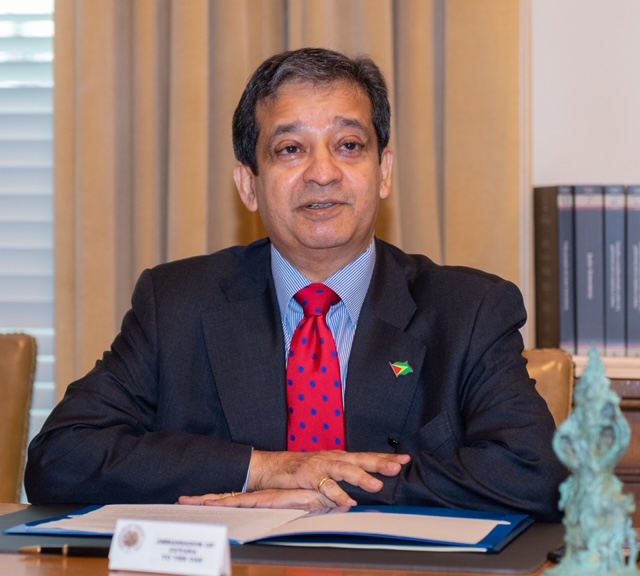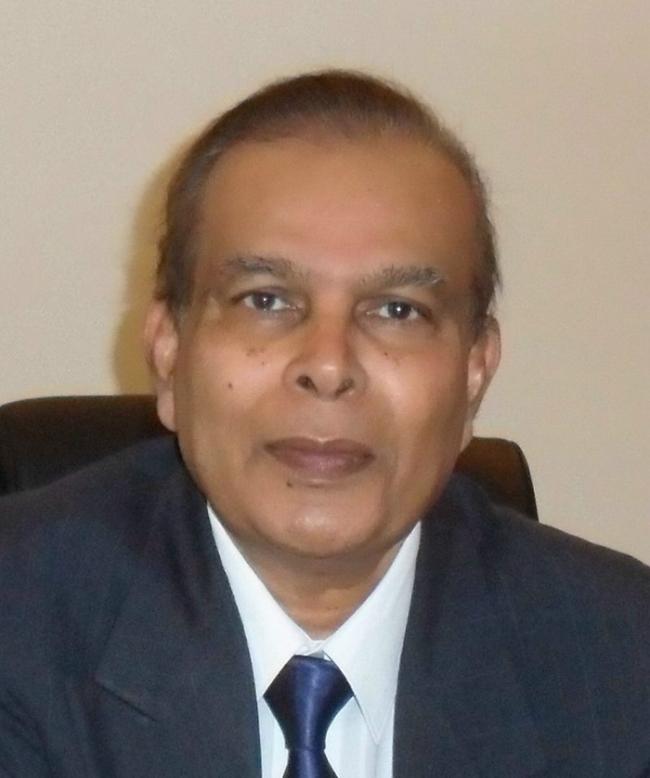Secretary of State Antony Blinken’s visit to Guyana on July 6 was significant for many reasons. Following so closely on former Secretary Mike Pompeo’s visit in September 2020, the first ever by an American Secretary of State to Guyana, Mr Blinken’s was confirmation of Guyana’s growing economic and geo-strategic importance to the United States. With Guyana’s huge oil reserves and potential to be a major player in energy security in the Americas, this hitherto relatively unknown small state has suddenly become a country of real interest to the most powerful nation in the world.
The courting of Guyana is quite logical against the backdrop of the pendulum swing to the left in Latin America; neighbouring Venezuela’s political and economic woes and the dramatic decline in oil production there; the threats posed by transnational organised crime; and U.S. competition with China for geopolitical influence in Latin America and the Caribbean. The U.S. clearly wants to keep Guyana close.
Secretary Pompeo’s visit was, it will be recalled, linked to the fraught period following the 2020 Guyanese election. It was a sign of support for Guyana’s democracy and recognition of Guyana’s emergence as an oil producer. Secretary Pompeo brought a firm indication of U.S. interest in enhancing the bilateral relationship, particularly with regard to security and market opportunities, amidst concerns about the erosion of democracy in Venezuela and China’s growing footprint in the region. U.S. interest in developing a robust, private sector-led trade and investment relationship is even stronger today. Secretary Blinken’s visit marks a turning point.
The official announcement of the visit flagged the following issues for discussion: food and energy security, decarbonisation, climate resilience, regional migration and building local capacity. After their meeting, both President Ali and Secretary Blinken stressed the solidity of the bilateral relationship based on shared values, common interests and, more tangibly, the fact that the U.S. is Guyana’s number one trading partner. Responding to President Ali’s remarks, highlighting, among other things, the aspiration to position Guyana as “a global leader on energy security, food security and climate security”, Secretary Blinken said their talks had focused on energy security, climate adaptation and hard security. He also endorsed Guyana’s dual commitment to fighting climate change and to exploiting its hydrocarbon resources to finance the transition to low carbon development, saying “Guyana will soon be the highest oil-producing country per capita in the world, but it’s also a leader in forest conservation, demonstrating that it’s possible to prioritize climate mitigation and environmental protection while responsibly using fossil fuel resources.” This statement is not insignificant in the context of the debate on fossil fuels and global warming.
While there was no mention of the Guyana-Venezuela Border Controversy or any public expression of U.S. support for Guyana, it would be reasonable to expect that the matter was privately discussed. One would hope that U.S. support is a constant, even if nothing can be taken for granted.
Nor was there any specific mention of new bilateral cooperation initiatives to help build capacity and strengthen national institutions. But, in underscoring the partnership between the US Export-Import Bank (EXIM) and Guyana, on the “gas-to-energy project that’s going to cut emissions by 50 percent,” Secretary Blinken also made a direct pitch for greater US private sector involvement:
“American companies can bring unparalleled expertise, high labor and environmental standards, and transparency to help power Guyana’s dynamic growth, to advance regional energy security, to deliver tangible benefits to all the people of Guyana.” Lest it be forgotten, “American companies” would include the sizeable Guyanese diaspora in the U.S.
This second visit in less than three years by a Secretary of State to a country with a population of less than one million people and not wracked by war or any comparable crisis is a strong message that the U.S. wishes to remain Guyana’s strategic partner of choice and is ready to compete with other interested parties.
In the broader context, Mr Blinken’s visit immediately followed his participation in the annual meeting of Caricom Heads in Trinidad, on July 5 and built upon Vice-President Kamala Harris’s meeting with Caribbean leaders in The Bahamas in June. Both encounters were aimed at advancing implementation of the US-Caribbean Partnership to Address the Climate Crisis 2030 (PACC 2030), through three joint action committees, launched at the Ninth Summit of the Americas in Los Angeles, in June 2022.
U.S. outreach to the Caribbean and Guyana is very welcome, albeit a little late given the longstanding challenges faced by Caribbean governments in accessing cooperation and concessionary financing for development. And with 2024 being a U.S. election year, continuity of engagement cannot be assumed.
Much will depend on how much the three action committees can achieve in terms of quickly addressing energy security, food security and access to finance. In this respect, Guyana has a key role to play.as President Ali already has lead responsibility for food security.
In the meantime, the Guyana Government should do all it can to capitalise on Mr Blinken’s visit, to offer a welcoming environment for U.S. private sector investment, particularly in the fields of energy – both non-renewables and renewables – and infrastructure.
The stage is set for the rolling out of a framework to facilitate U.S.-Guyana private sector partnerships to bid for tenders and promote business activity. Such a framework with clear guidelines, transparent tender processes and a minimum of bureaucratic red tape, could also attract business and investment from the Guyanese-American diaspora, which can draw on the resources of federal agencies like EXIM.
All this would pave the way for meeting Guyana’s broader infrastructure and development needs, particularly in areas aimed at economic diversification, including agriculture, fisheries, air travel, tourism, education, health and information technologies. As Secretary Blinken implicitly recognised, the U.S. can directly support the country’s economic transformation, thereby contributing, in his own words, to the delivery of “tangible benefits to all the people of Guyana”.
Dr Riyad Insanally, CCH was a career diplomat for 31 years and last served as Guyana’s Ambassador to the United States of America and Permanent Representative to the Organization of American States, from September 2016 to June 2021. He is currently a Fellow at the Caribbean Policy Consortium, a Non-resident Senior Fellow at the Caribbean Initiative of the Atlantic Council’s Adrienne Arsht Latin America Center, and Senior Advisor for the Caribbean at the Transnational Strategy Group in Washington, DC.







